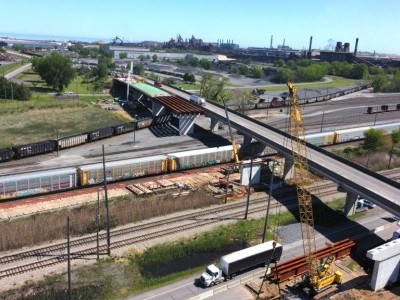New funding propels Pier Wind at Port of Long Beach
Nov 14, 2024The Long Beach Board of Harbor Commissioners on Monday strengthened its commitment to help California reach its renewable energy goals by taking a pair of actions to advance Pier Wind, a proposed 400-acre terminal at the Port of Long Beach to assemble and deploy floating offshore wind turbines.
Taken together, the approvals are aimed at attracting outside funding and authorization to build Pier Wind, which would be the largest facility of its kind in the United States.
“Pier Wind will contribute to creating a reliable electric grid that will enhance air quality and energy resilience, reduce California’s reliance on fossil fuels and help power the Port’s ongoing transition to zero-emissions equipment and vehicles,” said Port of Long Beach CEO Mario Cordero. “We look forward to making Pier Wind a reality and supporting California’s renewable energy portfolio.”

“The Port is pursuing development of Pier Wind to help California reach its renewable energy goals,” said Long Beach Harbor Commission President Bonnie Lowenthal. “Pier Wind will also be instrumental to the state’s economic growth by locally supporting 4,200 jobs during construction and another 1,800 green sector jobs during operations while potentially unlocking thousands of other jobs within the supply chain regionally and statewide.”
The Long Beach Harbor Commission agreed to commit up to $14 million in matching funds for a state grant that the Port will apply for in December, aimed at covering the cost of design, environmental review and community outreach for Pier Wind.
Additionally, the Harbor Commission authorized $6.5 million from the Port’s capital budget to continue with environmental documentation and project delivery activities while the Port’s grant application is under consideration.
Prior to voting, the Harbor Commission received a status update about Pier Wind, how it fits into the state's clean-energy strategy and the grant application to the California Energy Commission.
A newly released preliminary economic impact analysis found that Pier Wind could generate $8 billion in cumulative labor income, $14.5 billion in economic output and $1.3 billion in state and local taxes from now through 2045.
The Harbor Commission’s approvals come the week after California voters authorized Proposition 4, also known as the Climate Bond, which sets aside $475 million for port infrastructure projects connected to offshore wind development. Staging and assembly seaport projects are critical to the success of floating offshore wind on the West Coast, according to a statewide strategic plan adopted in July.
The California Public Utilities Commission earlier this year adopted a goal to procure up to 7.6 gigawatts of offshore wind power by 2035. In September, Gov. Gavin Newsom signed a bill that would streamline the design and development of Pier Wind by allowing the Port of Long Beach to use alternative construction delivery methods. As the design process progresses, the proposed layout for Pier Wind was recently updated based on industry feedback.
Pier Wind would allow for the staging, storage and assembly of some of the world’s largest offshore wind turbines, standing as tall as the Eiffel Tower. The fully assembled turbines would be towed by sea from the Port of Long Beach to wind lease areas 20 to 30 miles off the coast in Central and Northern California.
The proposed project is undergoing extensive environmental review by local, state and federal regulatory agencies as the Port of Long Beach gathers input from the community. If approved, construction of the $4.7 billion project (in 2023 dollars) could start as soon as 2027, with the first 200 acres completed in 2031, and the final 200 acres coming online in 2035.
Similar Stories

Port of Prince Rupert moved 23.1M tonnes of cargo in 2024 amid historic expansion phase
View Article
Port of Long Beach’s Cordero hails ‘Green Port’ achievements
View Article
Steering the Ship, Jess Ramirez Sworn In as President of Oxnard Harbor District
View Article
Jeffersonville port delivers record road salt shipments to Greater Louisville area during recent winter storms
View ArticleNC Ports Notice: Holiday Schedule Notice Martin Luther King Jr. Day
The Port of Wilmington Container Gate (South Gate) and the Charlotte Inland Port (CIP) will operate on a reduced schedule on Monday, January 20: 8 AM-12 PM and 1 PM-5…
View Article
Today in Energy: A look back at our forecast for global crude oil prices in 2024
View ArticleGet the most up-to-date trending news!
SubscribeIndustry updates and weekly newsletter direct to your inbox!





